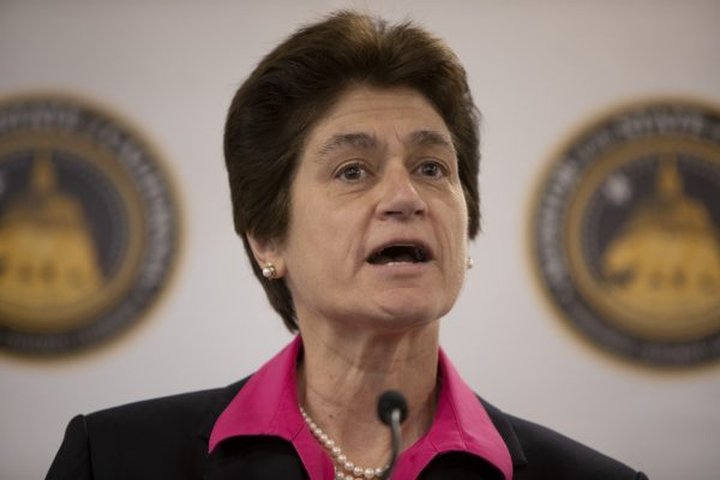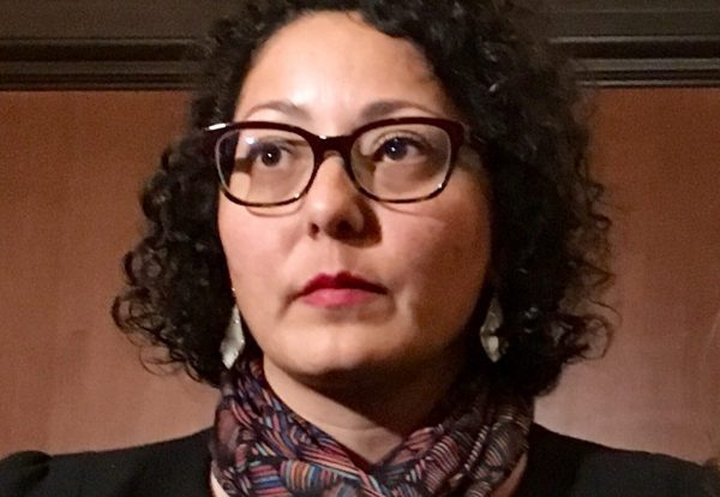
Children play at a waterfront park near the industrial Port of Los Angeles, between the Valero and Phillips 66 refineries right beside the Los Angeles Port. Photo by Iris Schneider for CALmatters
###
Millions of California toddlers who should have been tested for lead exposure have not received state and federally mandated blood tests, in part because the health hazard – a particular threat to poor children – has not been prioritized by state public health agencies, a state audit reported Tuesday.
In a searing review of a problem that has persisted for years nationally and in California, State Auditor Elaine Howle found some 1.4 million toddlers enrolled in Medi-Cal had gone untested for lead exposure between over the past decade, and another 740,000 missed one of two required screenings — a failure encompassing nearly three-quarters of the 3 million toddlers covered by the state’s publicly-funded health insurance program.
Federal and state laws require the state Department of Health Care Services to make sure blood lead level tests are administered to babies enrolled in Medicaid — known as Medi-Cal in California — when they reach the ages of 12 months and 24 months.
‘We have no problem treating these communities, like where I live, as wastelands,’ said Assemblywoman Cristina Garcia. ‘All of this needs to change.’
Testing is critical in the Medi-Cal cohort because studies show low-income children are most at risk of being exposed to lead via old paint, contaminated soil or air from lead smelters, tainted drinking water, industrial emissions and other lead sources. The Centers for Disease Control and Prevention has found that no level of lead is safe and that even low levels of lead can affect a child’s IQ and cognitive development and can damage the brain and nervous system.
“Many of these children live in areas of the state with high occurrences of elevated lead levels, making the missed tests even more troubling,” Howle reported.
The California Department of Public Health had data showing where lead exposure was highest, but failed to meet a statutory deadlines for publishing it on its website, Howle wrote. Citing that data, the audit found that, between fiscal years 2013 and 2018, among children who actually did get testing, half of those found to have elevated lead levels were located in just 15% of the state’s census tracts.
In fact, Howle wrote, “the [Sacramento-area] census tract with the most children who had elevated lead levels also had over 700 missed lead tests for children in Medi-Cal.” Other counties with high concentrations included Fresno, Los Angeles, Humboldt, Imperial, San Bernardino, Orange, San Diego, Madera and Riverside.

California State Auditor Elaine Howle found hundreds of missed tests even in the Sacramento census tract where records showed the highest levels of lead exposure. Photo by Anne Wernikoff for CalMatters
Democratic Assemblywoman Christina Garcia of Bell Gardens said she is “disappointed but not surprised” that agencies failed to implement a law she and Assemblyman Bill Quirk got passed in 2017 that doubled down on testing and accountability.
“All of these issues are those that affect low-income communities, that affect our most vulnerable populations, and it concerns me that the agencies don’t prioritize these communities,” Garcia said. “We have no problem treating these communities, like where I live, as wastelands. All of this needs to change.”
The Department of Health Care Services agreed with most of the audit’s findings and promised to do more “to ensure that required blood lead tests are occurring.”
In a statement, Acting Director Richard Figueroa said the agency expects to implement outreach campaigns by March to better inform Medi-Cal families about lead testing. By June, he said, managed plans will be required to identify all the children who have not been tested and remind their medical providers about the testing requirement. By the end of the year, Figueroa said the agency expects to have established a plan to improve and better enforce screening requirements.
Lead testing is not a new issue in California. As far back as 1999, the state auditor released a similar report finding that only 25% of the required testing was being done.
Department of Public Health Director Sonia Angell also released a statement promising to take “corrective” measures, including releasing a map of areas with high rates of lead exposure, helping counties create plans to address the problem, improving oversight of local programs and enhancing data reporting and screening requirements.
The CDC defines elevated blood lead level to measure 5 micrograms per deciliter — five millionths of a gram per three fluid ounces. In California, the Childhood Lead Poisoning Prevention Branch defines lead exposure even more strictly, rounding up to 5 any measure above 4.5 micrograms per deciliter. A child is considered “poisoned” if they measure at 15 micrograms per deciliter.
“Because we know that lead has such harmful effects on kids and the impacts last a lifetime, the state has a responsibility to want to eliminate all exposures so kids are not exposed in the first place,” said Jill Johnston, assistant professor of preventive medicine in the Division of Environmental Health at the USC Keck School of Medicine. “It’s important to do screenings as widespread as we can, especially for those who are the most vulnerable.”
Lead testing is not a new issue in California or nationally. In 1999 the state auditor released a similar report finding that only 25% of the required testing was being done.
A 2017 study by the Public Health Institute found that a third of kids poisoned by lead in the U.S. aren’t being captured because of testing gaps and loopholes. And in 2018, the non-profit Environmental Working Group found, based on Health Care Services billing data, that about three-quarters of California toddlers on Medi-Cal had not undergone the required lead testing.
This week’s audit, which looked at the fiscal years from 2009 to 2018, echoed those more recent studies, showing a testing rate of 27% — virtually unchanged over 20 years.

Assemblywoman Cristina Garcia said she plans to hold a hearing on the audit and how the state budget could be leveraged.
Local environmental activists have asked for increased testing and assistance over the years around state hot spots such as the former Exide lead battery recycler in Los Angeles or older neighborhoods in Oakland. USC’s Johnston agreed the state should focus on identifying crisis areas across California and work to eliminate community exposure.
“From a public health perspective it’s a more broad prevention to reduce exposure to lead,” she said.
Others echoed the auditor’s call for more aggressive oversight and outreach.
“There is no enforcement mechanism so the situation continues as is,” said Daniel Madrigal, a health educator for the Public Health Institute’s Tracking California program.
“Lead exposure impacts on a child are irreversible,” said Susan Little, senior advocate for California government affairs for the Environmental Working Group, a non-partisan nonprofit focused on environmental safety. “It is something a child will have to live with and that emphasizes the importance of preventing the exposure in the first place.”
Little said managed care plans and local counties also have a role in the problem but need to be managed by the state to meet requirements or create better response plans. Medi-Cal managed care plans are supposed to make sure providers screen kids, a mandate that Health Care Services reinforced in 2018.
Counties also are responsible for responding to elevated levels of lead but action has been inconsistent. The audit specifically dings Public Health for not having better oversight.
Dr. James Dahlgren, a Sunnyvale physician who specializes in toxicology and environmental exposures, called the current system “criminal” and said the state should respond even to low levels of lead exposure.
“Every child in the state needs to be tested and it needs to be paid for by government funds,” said Dahlgren. “It is a public health responsibility.”
Assemblywoman Garcia said she plans to hold a hearing about the audit and is strategizing on how the state budget could be leveraged to address it.
“Passing a law and mandating the audit is not going to change the culture,” she said. “So how do we use the budget and work with the governor to change the culture at agencies?”
###
CALmatters.org is a nonprofit, nonpartisan media venture explaining California policies and politics.
CLICK TO MANAGE